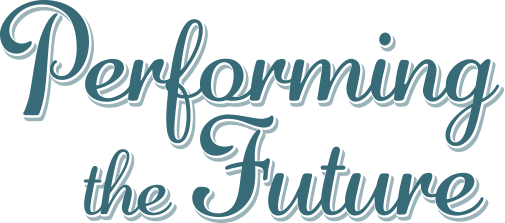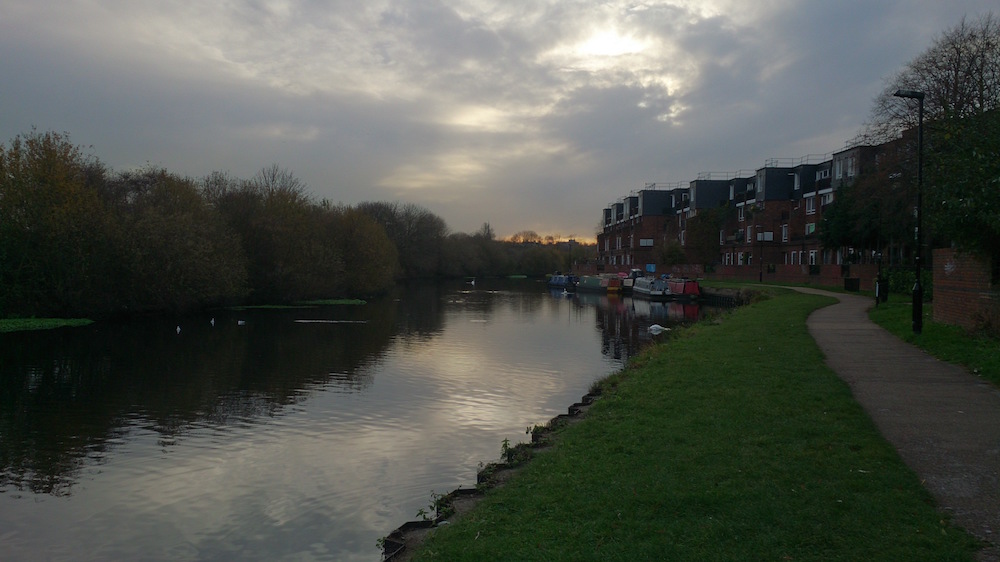I have entered a new research phase on the project, working mostly from my studio and home in Nottingham and sometimes on the boat in London, where I wrote this post last week…
Its the end of November, cold, bright, still and quiet (apart from the Coots tooting away), but strangely not so cold we need a fire, a blanket suffices for the moment.
I am planning the next series of artist labs – with Matt Watkins and Caroline Locke, with Frank Abbott working towards the Spring blossom at Primary, with Juliet and our time capsules in Oxfordshire, and finally I will be joining Wallace in Cumbria and taking The Prediction Machine to Cambridge also as winter turns to Spring. I think it’s going to be a busy but thoughtful time ahead.
In the meantime I am also working on the Future Machine with Dom and Lachlan at Horizon. For those people who visited the exhibition of ‘The Prediction Machine’ in Liverpool this summer they will have seen a small clue to what the Future Machine might be, and some people even signed up to join it.
The Future Machine is evolving from all the activities in the Performing the Future project. It is primarily an online space, that holds people’s promises for the future, providing a space to reflect on these quickly formed commitments, to possibly change them as people reflect more deeply or add updates for how and if they are being kept. You can read other people’s promises, send other people messages of support and find out about ways to join together as the future unfolds in in the real world. It explores what it means to commit to a promise, over a long period of time, possibly years, share it with people and together build a vision of a positive future.
Why online? I have been working with the internet since 1996 with my arts collective Active Ingredient (with Matt Watkins). We created experimental, new artworks using web and internet technologies, firstly with images, sound and text (we were excited about progressive jpegs as echoes of a ghost in the machine). Then we discovered Flash, animation and interactive storytelling, then online games, then we created our web streaming channel Moon Radio and MakeTV – our precursor to YouTube with a 24 hour timeline and flash video. Then we moved out of the computer onto mobile phones, creating our first mobile game in 2005 with GPS and heart rate sensors, then a few other GPS games… and then got drawn into the more commercial world of game design.
Then, I had enough of technology and our urban experiences. Maybe we started to grow up and things didn’t feel so new anymore. Technology didn’t feel quite so raw, exciting, underground and brave. Our aim had always been to find ways for technology to affect people emotionally and viscerally, to make the hairs stand up on your neck and to reveal the world differently as alternate realities, augmented realities, simulation versus reality, can technology help us transcend reality? This started to feel somewhat strained and tired. Our dreams had become mainstream and big business, the boom and bust of the 90s turned into tech companies making millions from data and advertising, games and ideas we pitched were either ‘too innovative’ or too early for the technology to catch up, it felt to me like we were being asked to stick to reinvent the wheel and to leave the innovation (several years after it had already been done) up to the big guys in London, Tokyo and California – or maybe the commercial world just isn’t for me.
A trip to Brazil to present our game Heartlands turned things inside out, through a conversation with Paulo Hartmann and Marcelo Godoy from Mobilefest about a road, the BR163, being built through the Amazon. They talked about the war between the indigenous peoples of the forest, the loggers, the military and the farmers. Suddenly the sensors we were using in our games and interactive experiences became an opportunity to intervene in truly contested spaces and with communities outside or on the edge of the city, to discover the forest, to make connections between people and places that we might still be able to protect, to understand, to sense and be sensed. In doing so we thought more deeply about the data we were tracking and measuring, talking to the scientists who had a more complex picture than we could ever measure.
We began to explore what it meant to be standing in a forest with all our senses alert and what a conversation with a tree might involve. We got to know some trees quite well, our friends in Sherwood Forest, Rockingham Forest and Haddon Forest in England, and in the Mata Atlantica in Brazil, some of the people and even some of the birds and other animals, close to these trees.
I have become increasingly unsure about our relationship to technology. Many people are becoming concerned, from the tech world and further afield, particularly about how we now relate to and through the internet and social media. I also feel partly responsible for the ubiquity of mobile phones and IoT. I even did a PhD with the natty title ‘Ubiquitous Computing in the Digital Economy’. Active Ingredient created some of the first mobile games, social media and web video streaming experiments, certainly precursors to Pokemon Go and YouTube, and here we are now with children watching the pornographic and murderous cultural coloniser Peppa Pig via YouTube. Facebook and Twitter are allowing Russian Trolls to influence our elections, they don’t penalise Trump for hate speech and have unthinkingly created a space for child groomers and the slave trade to flourish. Pokemon Go – well that was fun and interesting, but the excitement didn’t last long, or really change the world.
So, I have concerns now about about working with the Internet and social media. Here, as I look out to the future, from this narrowboat on the River Lea, wrapped in a blanket, gazing at cold-ish November blue, grey sky.
I will not turn away from the Internet and technology yet. As much as the forest and sky is calling to me and I prefer to rest my eyes on the abundance of yellows, oranges and browns of the Autumnal forest beyond the river. Through Performing the Future I want to continue ask questions of the technologies that are so ubiquitous in our lives now. Can data help us? Can we yet design technology that help us make to make commitments, work collectively, noticing time and seasons passing and bring us together to respond to change and uncertainty on both global and local levels?
The Future Machine is hopefully a bridge between technology that can reveal the invisible, send messages around the world within seconds and bring people all over the world together, and the physical, emotional, sensory material and immaterial world we inhabit as humans on this wonderous planet (as opposed to the virtual planet internet).
The Future Machine will send you a message from the future, in the new year, this message will arrive in the post. It is my hope that each message, interaction and promise will help us find some of what we need to envision and work towards a positive future.
This week in the news, the subject of animals as sentient beings and how this can be fully enshrined in the laws of this land has been hotly debated. As we move away in the UK from the collective responsibility of the European Commission we are discovering what makes up the laws, philosophy, regulations and rights of people in our society. It is looking like much of our lives (humans, non-humans, earth and atmosphere) is now up for debate.
So here we are, at this point in time. As always the past is behind us and the future in front. This transition period for our society feels to me on shaky ground and possibly a shaky sky (all changes in the atmosphere considered). The future is as uncertain as ever, flowing through us, like the storm subsiding from last night (that dropped huge amounts of water again in the North West).
I have turned back to the past. Considering sentience, care, ritual and the sacred. To consider what it means to commit to a promise. To remind myself what it means to watch over and protect a tree, a tree that means something powerful and possibly sacred. A tree that holds you where you are and in place to meet with others.
I turn to the past to consider what time passing means as the mundane, material, practical and everyday and what time means to our beingness. Turning to the past I hope to understand the future.
Image: The River Lea on a November day

